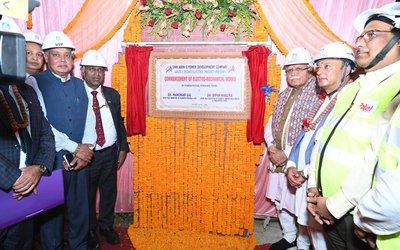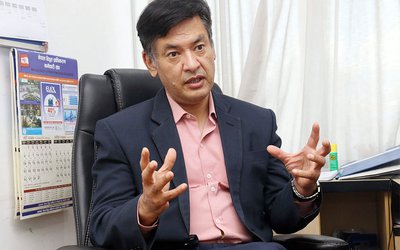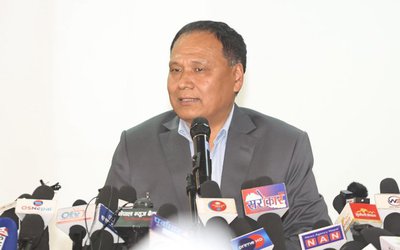
Since the signing of the Comprehensive Peace Agreement five years ago, Nepal’s economy has started to show a negative growth. During the civil war, we had much better economic indicator than what this country is realizing now after 2006. Thus, this is four years on the row. One of the major risks for the sustainability of the country is that the micro economic stability was broken now. There is the need to do a scanning to learn of what kinds of constrains are there in sector specific terms. What kinds of constrains have different agencies, foreign, government and national, diagnosed for the country. There is a need to scan all these indicators and put them in order for Nepal growth. For instance, poverty, inclusive growth, inequality, deficit in balance of payment in external trade, declining trend of foreign exchange reserve, declining of remittances growth etc are there. There is the need to do a ranking of all constraints and how to make them sustainable through the intervention of the government.
This is a major question. The present question is not only to diagnose the binding constraints of growth. By now there has been a couple of dozens of field based research works by local and international consultants and donor communities as they have nicely diagnosed Nepal’s economic problem. The problem now is the restructuring and building of economy like in the politics where there is discussion on the issue of governance, restructuring of state, state building and so on. When such issues are surfacing, politics is looking at Nepal with the perspective of a federal state. Something is taking place in politics but they left the issue of economic restructuring at the hands of god. This is the reason most of the economic indicators which are linked with Indian economy are being delinked. The parameters of economic linkages with Indian economy is now delink. This is the reason even after the decline of inflation in India, our inflation continues to rise. We have now economic institutions that cannot work in Nepal’s present context.
This is the most damaging thing in Nepal’s economy. On the one hand Nepal’s foreign currency reserve can only back the imports of 6.5 months of goods and services. We had reserves to sustain 14 months. Why did India go for aggressive liberalisation in 1990? Because when there was dramatic decline in the foreign exchange reserve in India. This was the major damage. It was in terms of millions of US dollars. We need to develop outward looking economy and lift the restrictions. India liberalises its market to invite more foreign investment. That was the reason Nepal brought the convertibility regime. Initially, there was a partial convertibility and later on there was full convertibility. This is the reason there was high growth in urban sector but the inequality increases in rural sector. This is the reason there was decline in poverty after 1980s and the inequality also rose.
For the inclusive growth the present inequality trend is inimical. We cannot have sustainable economy in this context. Now the time has come to do something. If we want to carry our fragile economy, planning commission, ministry of finace and central bank need to have a working committee. There is a liquidity crunch but the finance ministry is following expansionary policy. The growth is declining but the size of the budget is increasing. This is the reason the estimate inflation report is growing. Although NRB estimated 7 percent inflation, there remains a double digit inflation. If Nepal continues to move this way, it is inevitable that it will have a slow growth. It is almost certain that Nepal can not achieve a growth of more than 3.5 percent in this fiscal year. There is a need to additionally invest to achieve the target of 5.5 percent. The country which we brought up under the three year interim plan, which projected 25 billion rupees for agricultural sector, that amount of money was aborted with the reasons unknown. We don’t have that kind of capability. Then how come can we achieve 5 percent growth? Where is the institution that can balance the expansionary policy? Expansionary policy means higher inflation. When we failed to narrow down the double digit inflation since last two years, how can we contain the inflation when we are increasing the size of the budget by 20-25 percent. This will increase inflation and the life of the people will be more difficult. In this context the question of inclusive growth is a distant dream.
If politicians fail to link state restructuring with the economic restructuring, politicians will lose their credibility to go ahead with politics. Nepal’s question now is to make the growth sustainable.
(As told to New Spotlight)
- TEACHERS ON STRIKE: Students' Future In Jeopardy
- Apr 25, 2025
- NEPAL-THAILAND: Joint Business Council
- Apr 13, 2025
- BIMSTEC SUMMIT: Nepal’s Stand
- Apr 11, 2025
- IME GROUP: Expands Into Paper Industry
- Mar 24, 2025
- CPN UML: Instigated By India
- Mar 23, 2025















